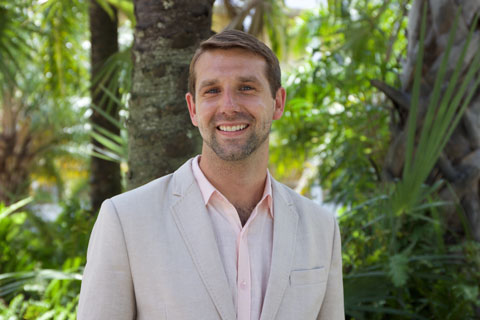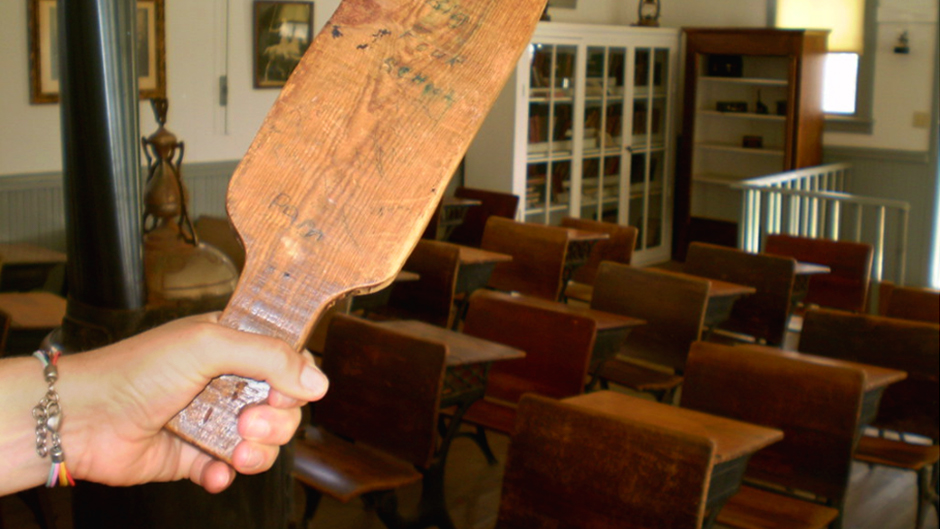Before the Civil War, white social reformers sought to limit the use of corporal punishment in public schools for an appalling reason that, more than 150 years later, does not surprise University of Miami sociologist Nick Petersen.
As Petersen and his co-authors noted in a recent study linking historic lynchings to the current use of corporal punishment in southern schools, early opponents condemned the physical punishment as “more befitting the negro plantation than the republican schoolhouse.” According to education journals of the time, opponents feared that white students subjected to such “brutalizing and degrading” methods of discipline might develop “the character or temper of a slave.”
Yet Petersen, an assistant professor who teaches criminology in the Department of Sociology and has a secondary appointment in the School of Law, was stunned to learn when he embarked on the study that 19 states still allow the pain-inflicting discipline that the United Nations Convention on the Rights of the Child deemed a violation of human rights in 1989.

“I had studied historical racial violence before, but corporal punishment was new to me, and it was shocking to learn that so many states still allow it and still use it so frequently,” said Petersen, who researches how institutions perpetuate racial inequalities.
Published last November in the journal Social Problems, the study received little attention outside of academia until two weeks ago, when the HuffPost illuminated the findings amid the nation’s ongoing reckoning with its history of racial injustice.
“As millions of Americans protest police violence and racism against Black people after the killings of George Floyd and Breonna Taylor, the study’s findings are especially urgent, connecting racial violence in the past with brutality against Black people today,” the HuffPost article reported.
But given the South’s history of violent racialized social control, including whippings intended to keep slaves in their place, the findings did not surprise Petersen and the study co-authors—Geoff K. Ward, now a professor of African and African-American Studies at Washington University in St. Louis who studies the legacies of racial violence; Aaron Kupchik, professor of sociology and criminal justice at the University of Delaware who studies racial inequality in school punishment; and James Pratt, one of Ward’s graduate students at the University of California, Irvine, where Ward also mentored Petersen.
Petersen and his co-authors suspected that schools in counties with a history of lynching would not only be more likely to employ corporal punishment today, but disproportionately impose it on Black students—and they were right.
By comparing a database of the nearly 4,000 documented lynchings between 1865 and 1950 with data collected by the U.S. Department of Education’s Office of Civil Rights in 10 southeastern states, including Florida, that still permit corporal punishment, the researchers found that the physical discipline is more common for all students in areas with a legacy of lynching. But it’s most pronounced for Black students, who, when no other factors were considered, were 24 times more likely than white students to be corporally punished. After adjusting for such variables as school/county demographics and problem behaviors, the researchers found that, for each historic lynching in a given county, the likelihood of Black students being subjected to corporal punishment increased by 6 percent.
The biggest offenders: Alabama, Arkansas, and, at the top of the list, Mississippi, which had the most documented lynchings—708 between the Civil War and World War II—and the highest use of corporal punishment in the 2013-2014 school year, when it was administered, often with a wooden paddle, at least 24,954 times.
“Other people are pretty shocked when you tell them the findings. They think, ‘Wait a minute—something that happed more than 100 years ago still has a correlation to, say, school punishment?’ ’’ Petersen said. “But when you start to think about some of the historical mechanisms for inequality in our institutions, they didn’t just come overnight. There is a historical arc. So, it starts to make a lot more sense.”
Though always interested in social justice issues, Petersen first became attuned to those mechanisms while touring a state prison as an undergraduate psychology student at the University of California, Santa Cruz—a visit that would redirect his career path. Inside the prison walls, he was startled to find even more rigid racial and ethnic segregation than outside.
Black and white inmates remained starkly divided, but Petersen would learn, the divisions didn’t evolve organically. Prison officials often segregated inmates at intake. They would ask incoming inmates, “What do you identify as? White? Black?’’ Or sometimes they would just make the determination themselves.
“What I found so striking was how the prison itself sought to reinforce the racial divisions that already exist in society and perpetuate inequalities,” Petersen recalled. “That led me done this rabbit hole that I am still going down, trying to figure out how these institutions that are supposedly there to promote justice might be promoting injustice, or reinforcing or creating inequalities.”
While earning his doctorate in Criminology, Law, and Society at UC, Irvine, Petersen began investigating racial disparities in the imposition of the death penalty, and collaborated on another lynching study with Ward, which examined the relationship between historic lynchings and civil rights-era terror to contemporary interracial homicide. Published in 2015, the year Petersen joined the University of Miami faculty, it planted the seed for the study on corporal punishment.
Since then, Petersen, who has taken his own students to local prisons and county jails to meet those impacted by racialized mass incarceration, has published extensively on a range of related racial justice issues. In 2017, three years after the Black Lives Matter movement was born, he and Roger Dunham, the past chair of the Department of Sociology, wrote “Making Black Lives Matter.” In the essay, the duo outlined a number of measures aimed at reducing police bias in the use of deadly force. Among them was the creation of a national data base of police-involved shootings—a more comprehensive version than the one President Trump ordered the Justice Department to create this past June, in the wake of national protests spawned by the police killings of George Floyd and other unarmed Black residents.
In 2018, Petersen and former colleague Marisa Omori released an unprecedented study of defendants in Miami-Dade County's criminal justice system. It found that black defendants, particularly black Hispanics from poor neighborhoods, are systematically treated more harshly at every stage—from pretrial detention to sentencing.
Conducted in collaboration with the American Civil Liberties Union of Florida, the study followed the cases of roughly 200,000 adults who were arrested and booked into jail between 2010 and 2015. Petersen and many of his students have used that treasure trove of data for a number of other studies. Among the most recent: one aimed at understanding whether the way facial recognition programs classify people of color exacerbates inequalities within the criminal justice system.
Now, as the national soul-searching over the United States’ legacy of racial injustice continues, Petersen is heartened by the growing awareness of the institutional and structural biases that have consumed his research. But he finds the moment bittersweet.
“As a researcher you want your research to make a difference, but it’s very sad that something like George Floyd’s death would have to happen for people to take an interest in racial justice,” he said. “But maybe Floyd’s death is one of those watershed moments that are so difficult to ignore that they change things forever. Just like how the savage lynching and picture of Emmett Till’s brutalized corpse on the cover of Jet magazine helped fuel the civil rights movement. Maybe 50 years from now, we’ll look back and see that this was the case that really turned the corner on racial equality.”

